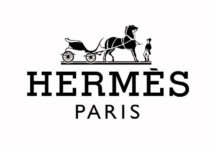The brewing and fermentation of starches from cereal grains produce an alcoholic drink or beer. Hops are often brewed for beers; their bitterness serves as a stabilizing and preservative element. Today, we’ll discuss Porter’s five forces analysis of Beer Industry; bargaining power of suppliers and buyers; threat of new entrants and substitutes; and intense rivalry as competitive forces in strategic management.
Varieties of the Beer Industry
- Premium beers
- Bottom fermented beers
- Top fermented beers
- Lambic beer of Belgium
Statistical facts and figures of Beer Industry
- Market size – 851.15 billion USD (2023)
- Growth rate – 4.03%
- Forecasted Market size – 1167.47 billion USD (2032)
Top Companies in the Beer Industry
- Castel Group
- Tsingtao Brewery
- Coors Brewing Company
- Heineken
- SABMiller
- Hopworks Urban Brewery,
- Diageo,
- Molson Coors.
- Constellation Brands,
- Greene King,
- Societe Commerciale de Brasserie,
Porter’s five forces analysis of Beer Industry would analyze the bargaining power of suppliers and buyers; the threat of new entrants and substitutes; and intense rivalry as competitive forces in strategic management. Here’s Beer Industry Porter’s five forces analysis of alcohol and wine business as follows;
Porter’s Five Forces Analysis of Beer Industry
Let’s discuss Porter’s five forces analysis of Beer Industry as competitive forces in strategic management and they’re as follows;
Bargaining Power of Suppliers in Beer Industry
The bargaining of suppliers is lower in the Beer Industry as competitive forces in strategic management. Some of the main factors impacting the bargaining power of suppliers in the Beer Industry Porter’s 5 forces analysis of alcohol and wine business are as follows;
I-Availability of Supplies
Usually, suppliers pose a significant threat to the business because they control the production supplies, packaging materials, bottles, equipment, and fermentation chemicals. In the case of beer industry, the raw supplies (fruits and vegetables, cereal), equipment, packaging material, labor, and other necessary supplies are readily available for the production of alcohol and wine. Easy availability of raw supplies and materials decreases the bargaining power of suppliers.
Bargaining Power of Buyers in Beer Industry
The bargaining of Buyers is Higher in the alcohol and wine business as competitive forces in strategic management. Some of the main factors impacting the bargaining power of suppliers in the Beer Industry Porter’s 5 forces analysis of the alcohol and wine Industry are as follows;
I-Variety of Options
While shopping beer, ordinary customers have a lot of options ranging from premium to affordable. There are multiple companies producing beer locally and globally and they target the same adult beer-consuming customers market. However, it gives significant bargaining power to the customers; because they could switch from one beer brand to another without incurring any cost.
II-Advertisement & Taste Variety
In order to attract the attention of customers; alcoholic and beer manufacturing companies run advertisement campaigns on various media channels. They offer unique tastes in multiple flavors to further impact the customer decision-making process. It allows them to differentiate themselves from the competition with unique tastes, new flavors, and attractive packaging.
Threat of New Entrants in Beer Industry
The threat of new entrants is Moderate in alcohol and wine business and Beer Industry as competitive forces in strategic management. Some of the main factors impacting the threat of new entrants in the Beer Industry 5 forces analysis of alcohol and wine industry are as follows;
I-High Investment
When it comes to launching a beer-producing company, then it requires heavy capital investment. The expenses would be in the form of building rent, equipment and machinery cost, raw material cost, and various other running expenses of employee salaries, utility bills, marketing and advertisement, and other costs. Collectively, it is highly expensive to launch a beer company and capture the market share with the first attempt.
II-Regulation & License
Along with the heavy capital investment, alcoholic beverage manufacturing companies need to earn a license from the government authorities after meeting the required health and safety measures and protocols. In fact, beer and alcoholic drinks production and sale business is not allowed in some Muslim countries. That’s why it is significant to keep in mind the legal cost and bureaucratic procedure of the country.
Threat of Substitutes to Beer Industry
The threat of substitute products and brands is higher in the Beer Industry as competitive forces in strategic management. Some of the main factors impacting the threat of new substitutes in the Beer Industry Porter’s 5 forces analysis of alcohol and wine Industry are as follows;
I-Unique Taste & Flavor
In order to differentiate themselves, alcoholic drinks manufacturing companies offer a unique taste and flavor to their product beer. It allows them to target a specific segment of the customer market.
II-Low Switching Cost
As mentioned earlier, there are multiple companies operating their business in the beer industry. They all offer unique taste, packaging, flavor, and competitive pricing to the customers. Customers could easily switch from one brand to another without incurring any cost.
Competitive Rivalry in Beer Industry
The competitive rivalry among alcohol and wine companies is very high in the Beer Industry as competitive forces in strategic management. Some of the main factors impacting competitive rivalry in the alcohol and wine Porter’s 5 forces analysis of the alcohol and wine industry are as follows;
I-Tough Competition
The alcoholic drinks and beer industry has become highly competitive in recent years. Companies offer unique tastes, flavors, prices, and other deals to gain a competitive edge in the market. Big companies invest a significant amount of resources in marketing and advertisement to amplify their market reach and strengthen their brand positioning.
Conclusion: Beer Industry Porter’s Five Forces Analysis |5 Forces Analysis of Beer Industry
After an in-depth study of Porter’s five forces analysis of beer industry; we have realized that beer is the world’s leading alcoholic drink. If you are learning about the Beer Industry five forces analysis of alcoholic drink and wine business; then you should keep in mind the abovementioned bargaining power of suppliers and buyers; threat of new entrants and substitutes; and intense rivalry as competitive forces in strategic management.

Ahsan is an accomplished researcher and has a deep insight in worldly life affairs. He goes Live 3 days a week on various social media platforms. Other than research writing, he’s a very interesting person.


